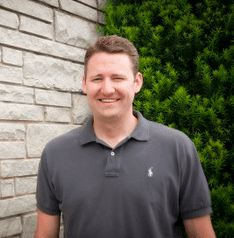 By Joe James, the Education minister at the SouthSide Church of Christ in Rogers Arkansas.
By Joe James, the Education minister at the SouthSide Church of Christ in Rogers Arkansas.
Trusting the Table (4): Let Them Grow Together
“Trusting the Table” is my name for the Third Way in a world that pulls us in two directions: conservative and progressive. In my previous posts, I have argued that conservatives root their hopes in returning to days gone by and that progressives root their hopes in a future of our own making. There has been some really helpful push-back on both of these (which I really do appreciate) and nuance may be called for. But I think the general premise works and here is why I think so: progressives talk as if the world is generally a better place than it was a few generations ago, while conservatives talk as if the world is generally worse. I don’t think either of these views fully captures what is happening in the world.
Weeds, Wheat & Worldview
In Matthew 13:24-30, Jesus gives us an incredible parable.
“The kingdom of heaven may be compared to someone who sowed good seed in his field; but while everybody was asleep, an enemy came and sowed weeds among the wheat, and then went away. So when the plants came up and bore grain, then the weeds appeared as well. And the slaves of the householder came and said to him, ‘Master, did you not sow good seed in your field? Where, then, did these weeds come from?’ He answered, ‘An enemy has done this.’ The slaves said to him, ‘Then do you want us to go and pull them up?’ But he replied, ‘No; for in gathering the weeds you would uproot the wheat along with them. Let them both grow together until the harvest; and at the harvest I will tell the reapers to collect the weeds first and bind them in bundles to be burned, but gather the wheat into my barn.’”
As in all of Jesus’ parables, this one is rich in ideas, possessing multiple layers of meaning. First, there is the obvious meaning that it is not the job of the workers to root out evil. That job does not belong to us because, frankly, God doesn’t trust our judgment. Our job is to simply work for the good of the field (which Jesus says in 13:38 is the world). Secondly, it tells us where good and evil come from. Good comes from the Master, the one who made the field possible. He sows only good seed in the world. Evil comes from an enemy. Notice that the “enemy” is not the weeds, but the one who sowed it – something Paul hints at in Ephesians 6:12.
But there is yet another layer to this parable (at least). For years now, I have been obsessed with this parable, and this is why. I believe it is a window into Jesus’ own worldview which refuses to get drawn into conservative and progressive categories. That window into his worldview comes in these words: “Let them both grow together.”
The world is not getting worse. The world is not getting better. Rather, good and evil grow alongside one another. Are some things better? Absolutely. Are some things worse? Absolutely. And here is why I think it matters that Jesus followers see it that way.
The Righteous Mind
Jonathan Haidt’s now famous book “The Righteous Mind: Why Good People are Divided by Religion and Politics,” outlines the psychology behind why “being on the right team” is so seductive. Haidt argues that moral reasoning is more intuitive than it is strategic. We have gut-level emotive responses to issues when they are raised. “Intuitions come first, strategic reasoning second.”
Haidt illustrates how this works by talking about an Elephant and its Rider. In this model, Haidt uses the Elephant to talk about our intuition, and the Rider to talk about our cognition. Haidt argues that human beings are more than a collection of convictions, ideas and beliefs we hold in our head – cognitive beings. Rather, he says we are emotive creatures, driven by our intuition. Sometimes our intuitions can be influenced by a shift in our cognition, but mostly we are driven by our intuition.
Haidt argues that politics is seductive precisely because we operate from intuition. Something feels right, and it is not that our cognitive reasoning has thought it through. Rather, our cognitive reasoning has simply “functioned like a press secretary to automatically justify any position taken by the president (our emotions).”
Haidt says that Jesus had social-psychology right millennia ago. The proper way to navigate our world is to be self-reflective, “removing the plank from our own eye, rather than seeking to remove the speck from our enemy’s eye.” Haidt takes Jesus seriously on this point because he knows that our minds work overtime as our press secretary not only to justify our own position, but to demonize the enemy position. The Righteous Mind, it turns out, is the wedge that divides good people; the knife that slices up the world into “us” and “them.”
The Table
When we get drawn into the progressive worldview we suddenly become seduced into thinking that conservatives are the enemy. When we get sucked into the conservative worldview, we can become convinced that the key is in rooting out progressives. But there is a problem with this: Jesus calls both conservatives and progressives to the Table. Jesus washes the feet of Zealots and Tax Collectors at the Last Supper. And then he commissions them to do the same for one another and the world. The task of the worker in the field is not to root out the enemy; rather it is to work for the good of the world.
And that brings me to the Table. At the center of Jesus’ mission in the world is his establishment of the Table. The Table is a call to be reconciled to God, but it is more than that. The Table is a call to be reconciled to our siblings, but it is more. The Table is a call to feast on the body and blood of Jesus, but it is more. The Table is a call to feed the hungry and care for our neighbors, but it is more. The Table is a call to trust in the Way of Jesus in the world.
At the Table we lay down our devotions to Zealotry as a way. At the Table we give up our Herodian desires. At the Table we fix our eyes on Israel’s Messiah, Jesus, who refuses to be devoted to either the fearfulness of a world falling apart, or the pride of a world getting better under its own steam. Rather, at the Table, we learn to trust in the reconciling work of eating bread and drinking wine.
Next week, in the conclusion to this series, I will explore why the church (people of The Table) is a sign and not a solution, and why that is good news.











